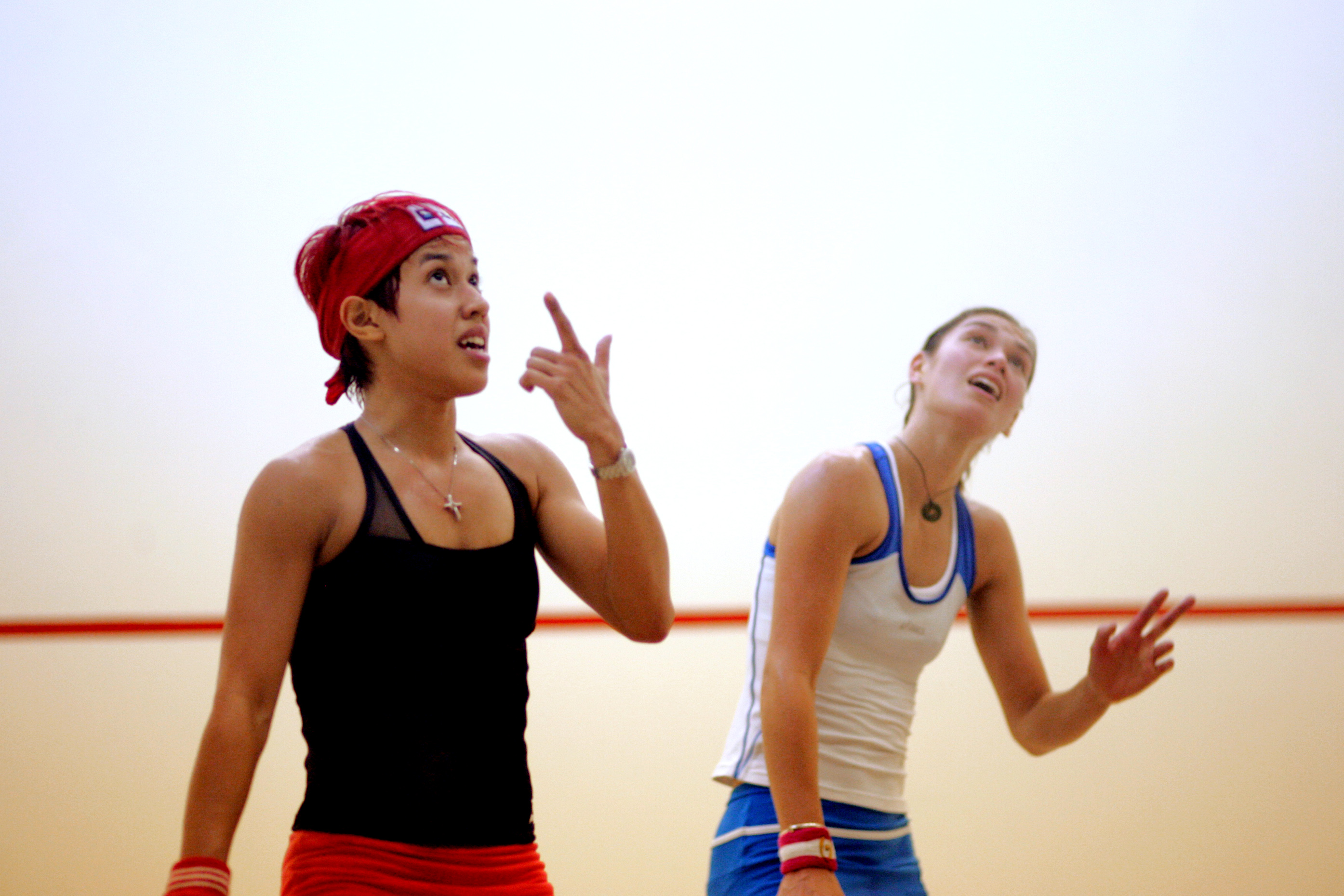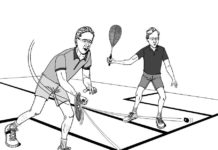By Rod Symington, WSF Referees and Rules Committee
An Irish bachelor was once asked if he were married. He replied: “Unfortunately, not—thank God!”
Many squash players seem to have Irish ancestry: They want to have it both ways, too. Unfortunately for them, the Rules of Squash demand that once you have made up your mind, you must stick with your decision. You don’t get a chance to hedge your bet on the squash court.
A good example of the desire to have it both ways is the player who returns a serve into the tin and then says to the Referee (or the opponent): “I wasn’t ready.” Sorry, but when you take a swing at the ball, it signifies that you are ready—under all circumstances. There are no lets for second thoughts or regrets.
So if you want a let, because you are not ready to receive the serve, don’t swing at the ball!

Another example is the player who hits the ball and then calls “Let, please.” While a call of “Let” stops play, if you wait until you have already hit the ball to call it, you will not get one. By playing the ball, you have signalled that you were ready and willing to hit it—and that any circumstances that might have justified a let have not affected your ability to get to and play the ball. If there was any interference, you have played through it—and now you are stuck with your decision. Once you have hit the ball, you must play on.
Just to make things perfectly clear: The call of “Let” stops play—and the player’s request is judged at that that precise moment. In the example cited, the player has played through any interference and hit the ball; thus at the precise moment of the call of “Let,” there is no interference and therefore no reason for a let.
A common excuse used by players is: “I could not stop.” This excuse is heard when players hit the ball in dangerous circumstances (i.e., the opponent is in the way of their shot to the front wall), or when a player runs full tilt into the opponent while trying to get to the ball.
Again, you cannot have it both ways: If you want to play squash, you have to be aware at all times of where your opponent is and behave accordingly. “I could not stop,” is not an excuse. A squash player must be ready to stop whenever the situation demands it. If you truly cannot stop, don’t step on the squash court!
Imagine if you drive through an intersection past a “Stop” sign, hit another car and say to the cop who comes to the scene: “I couldn’t stop.” How would he react? “Oh, I understand completely, sir. Well, just try to stop next time. You can go now.”
On this planet you must obey “Stop” signs—and you must also obey the Rules of Squash. Yes, many squash players play the game with passion and ferocious energy. But at all times those elements must be under control so that dangerous play can be avoided.
Some years ago I was asked by a squash player: “Why do squash players call so many lets?” I said: “Do you want your opponent to hit the ball when you are in front of him, blocking his shot to the front wall?” He responded: “You gotta take your licks in life.”
I hope he is still playing squash and is happily married (with the family jewels still intact), and I hope he reads this column.





